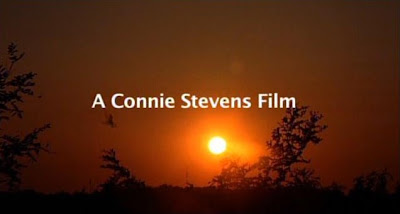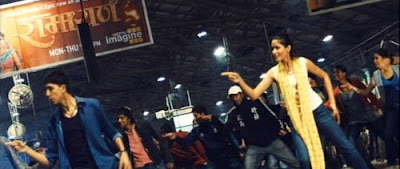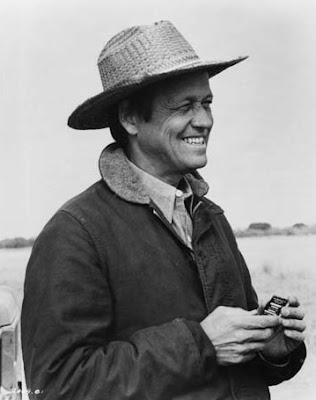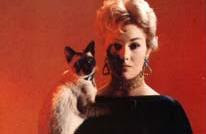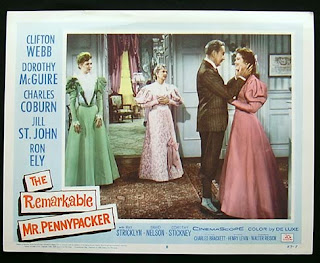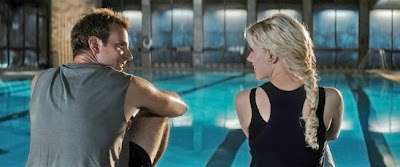
Saving The Movie Musical - Again. Is it Too Late?One of the more absurd segments of the recent Oscarcast was a deranged extravaganza, created by the dreadful Baz Luhrmann, ostensibly celebrating the return of the movie musical.
Yeah, pure fantasy.
The best Hollywood can do these days is produce one musical a year. Actually, 2007 produced two - Tim Burton's "Sweeney Todd - The Demon Barber of Fleet Street" and Adam Shankman's "Hairspray."
Next up: Jim Carey and Jake Gyllenhaall in a planned, "contemporized" remake of Adler-Ross's Damn Yankees," with no one yet set for Lola, the female lead. That probably won't make it to the screen until, say, 2010. Which means there will be no movie musicals in 2009. None. Nada.
Face it: Musicals have been struggling in Hollywood for years - nay, decades. Back in August of 1962, the cover story of LOOK magazine was about - yes - the big comeback of the movie musical. The movie year 1959 produced only Otto Preminger's "Porgy and Bess" and Melvin Frank's "Li'l Abner," neither of which seemed to excite moviegoers.
Matters didn't look good back then.
A year later, in 1960, there was Walter Lang's embarrassing "Can-Can" and Vincente Minnelli's pleasing "Bells Are Ringing." The Minnelli film wasn't a huge success but you can see how the director sensed that the the movie musical was on its last leg and he experimented accordingly to make it more palatable for audiences. The next time you see it, check out how Minnelli's staging invigorates the "I Met a Girl" number by having star Dean Martin sing it while fighting his way through sidewalk traffic, and he turns "Mu-Cha-Cha" into a pseudo-musical number by eschewing the song's lyric and staging the dance in an off-the-cuff, improvistory manner.
Matters were so dire that when Joshua Logan brought "Fanny" to the screen in 1961, he reduced the Harold Rome score to background music. But, the same year, there was a turaround, albeit a brief one, for the musical with the success of Henry Koster's "Flower Drum Song" and Robert Wise & Jerome Robbins' Oscar-winning "West Side Story."
These two prompted Hollywood to hanker down and produce José Ferrer's remake of "State Fair," Morton Da Costa's "The Music Man," Mervyn LeRoy's "Gypsy," Chalres Walters' "Jumbo" (that's Doris Day and Martha Raye, above, in a scene from the film) and George Sidney's "Bye, Bye Birdie" over the next two years - as a group a hook for the LOOK magazine piece, titled "Hollywood Musicals Are BIG Again."
Billy Wilder's "Irma La Douce," on the other hand, went the "Fanny" route, sans Marguerite Monnot and Alexandré Breffort's fabulous songs (most of it adapted as background/mood music by André Previn).
Since then, Hollywood has tried different ways to rehabilitate the genre. Logan put both "Camelot" and "Paint Your Wagon" on film with strictly A-list casts; when Roger Corman produced the film of "A Little Night Music," as insurance, he stayed with its stage director, Harold Prince (the ploy didn't work; the film didn't click); when "The Wiz," "Annie" and "A Chorus Line" were made, the studios entrusted them to serious filmmakers - Sidney Lumet, John Huston and Sir Richard Attenborough, respectively.
Nothing worked. The critics disapproved and audiences stayed away.
Yes, there were sporadic, near-freak hits - Wise's "The Sound of Music" and Bob Fosse's "Cabaret" (two films I don't particularly like), Randall Kleiser's "Grease" (a film which has more than worn out its welcome) and Colin Higgins' "The Best Little Whorehouse in Texas" (I like it actually).
Still, these were few and far between. The film musical has never really bounced back. After all these years - nearly 50, by my count - it's still struggling to be accepted again, accepted unconditionally.
Getting back to the planned remake of "Damn Yankees," who will - could - play Lola? Who? Well, almost any of the following talented actresses, all of whom are age-appropriate for Gyllenhaall: Amanda Seyfried, Amy Adams, Zooey Deschanel, Kate Hudson, Amanda Bynes, Anne Hathaway, Evan Rachel Wood, Rachel McAdams, Reese Witherspoon and Scarlett Johansson. Personally, I'd go with either McAdams or Deschanel.


